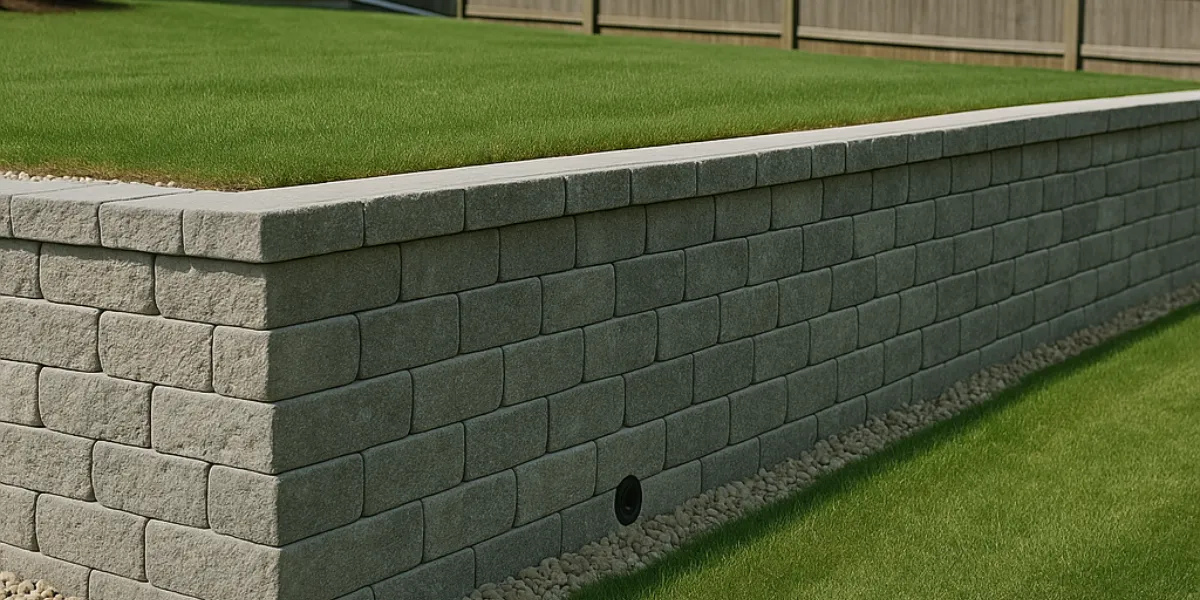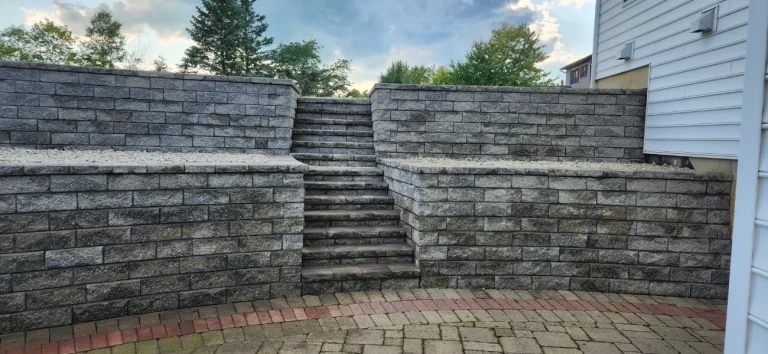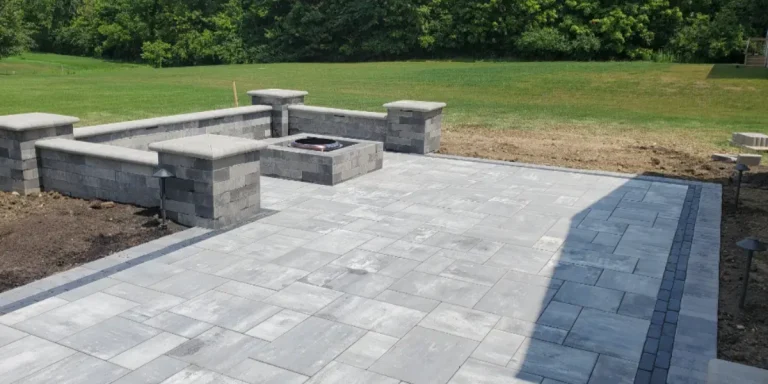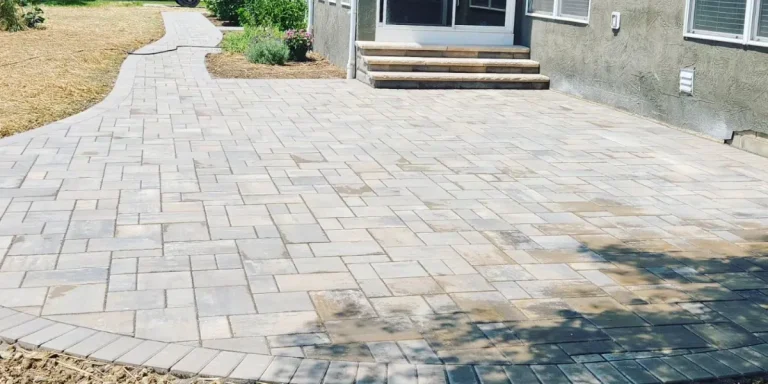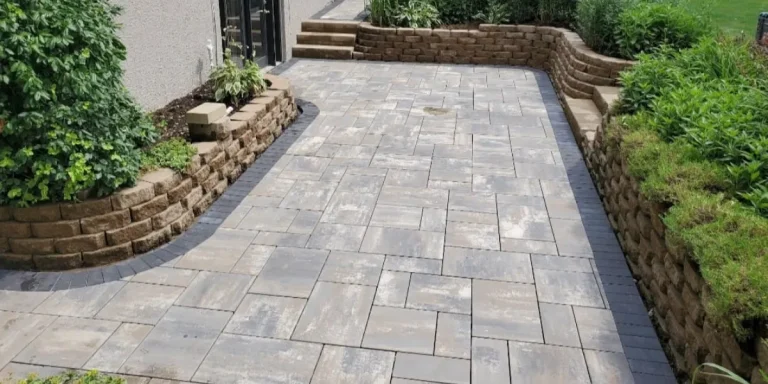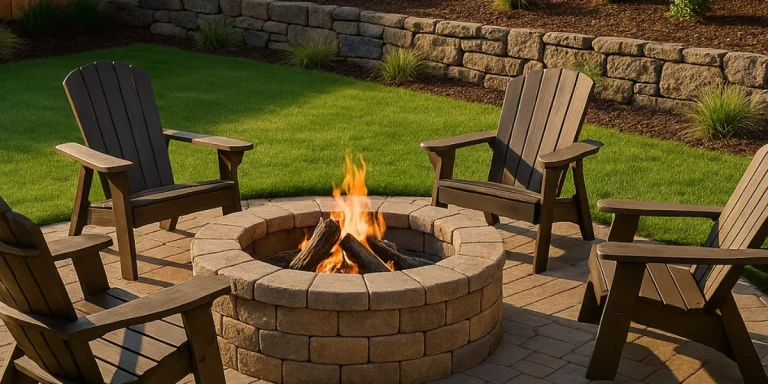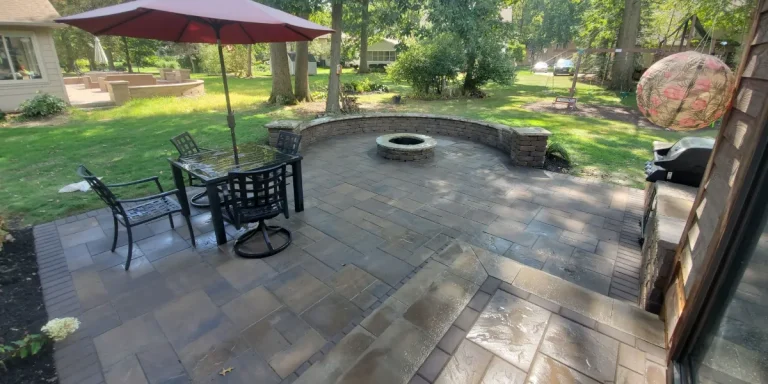Is Your Retaining Wall Leaning? What It Means
A leaning retaining wall is more than just an eyesore—it’s a warning sign that your landscape may have serious structural issues developing beneath the surface. If you’ve noticed your wall starting to tilt, bow, or crack, it’s time to take action before the problem worsens.
At Double A Ohio, we specialize in diagnosing and repairing retaining wall issues throughout Marengo and surrounding communities. In this article, we’ll break down what causes walls to lean, what it means for your property, and what you can do to fix it.
Why Retaining Walls Lean Over Time
Retaining walls play a critical role in your landscape—they hold back soil, manage elevation changes, and prevent erosion. When properly built using the right materials, drainage systems, and reinforcement, they can last for decades. But when shortcuts are taken or when environmental forces are underestimated, even the strongest walls can begin to lean or fail.
At Double A Ohio, we’ve repaired and replaced many failing retaining walls across Marengo, Sunbury, and surrounding areas. In nearly every case, the root cause falls into one of the following issues:
1. Poor Drainage Design
Water is one of the most destructive forces acting on a retaining wall. Without proper drainage behind the wall, rainwater and melting snow build up, creating hydrostatic pressure that pushes outward. Over time, this pressure causes walls to bow, crack, or lean.
Common drainage mistakes include:
-
-
- No weep holes
- No perforated drain pipe
- Using soil instead of gravel backfill
-
At Double A Ohio, we always install proper drainage systems—including French drains and gravel backfill—on every retaining wall we build to ensure water flows freely and doesn’t compromise the wall’s structure.
2. Lack of Geogrid Reinforcement
Taller retaining walls (typically over 3–4 feet) require geogrid reinforcement to support the weight of the soil and any additional load behind the wall. Without geogrid, the pressure becomes too much for the wall to handle on its own, causing long-term structural instability.
We strategically install geogrid during construction of segmental block walls, boulder walls, and natural stone retaining walls when site conditions call for it. This reinforcement integrates the wall with the surrounding soil to form a stronger, unified structure.
3. Inadequate Base Preparation
A weak or poorly installed base is another leading cause of leaning. Retaining walls must be built on a compacted gravel base, not just set on dirt or soft soil. If the base is uneven, too shallow, or under compacted, the wall can shift or settle unevenly.
At Double A Ohio, we dig well below the frost line and use laser levels and plate compactors to prepare a stable foundation for every wall.
4. Soil Movement and Freeze-Thaw Cycles
In Central Ohio, soil shifts with the seasons. Clay-rich soils expand when wet and shrink when dry, and repeated freeze-thaw cycles cause ground movement that puts lateral stress on retaining walls. This can gradually lead to leaning or collapse.
That’s why we tailor our builds based on the exact soil conditions of your property and offer grading and drainage solutions to redirect water and stabilize the surrounding landscape.
5. Tree Roots or Erosion Near the Wall
Tree roots can apply slow, steady pressure behind a wall, displacing soil and causing the wall to bulge or tilt. Similarly, uncontrolled runoff or improper grading can erode soil from behind or beneath the wall, creating dangerous voids.
We evaluate surrounding trees, runoff patterns, and slope conditions as part of every wall installation. When needed, we integrate root barriers, downspout extensions, swales, or catch basins to help preserve the integrity of the structure.
What Leaning Walls Can Lead To
A leaning retaining wall isn’t just an eyesore—it’s often the earliest warning sign that something more serious is happening below the surface. Whether the issue is poor drainage, soil movement, or lack of reinforcement, failing to address it promptly can result in much larger—and more expensive—problems down the line.
Here’s what can happen if a leaning wall is left unchecked:
-
- Full Structural Collapse
A wall that leans will eventually lose its ability to support the pressure behind it. In severe cases, this can lead to total failure—sending blocks, soil, and landscape materials tumbling down. This can be especially dangerous if the wall is near a patio, pool, driveway, or any high-traffic area. - Damage to Adjacent Hardscapes
As the wall shifts, it can compromise the stability of nearby paver patios, walkways, or driveways. You might start to notice cracks, uneven surfaces, or lifted pavers caused by movement in the surrounding soil. - Increased Soil Erosion and Poor Drainage
A failing wall no longer holds back soil effectively, which leads to erosion, washouts, and sediment runoff into your yard or garden beds. In some cases, water may begin flowing toward your home—putting your foundation, basement, or crawlspace at risk. - Safety Hazards for Family and Guests
A compromised retaining wall can pose a serious safety risk—especially for children, pets, and visitors. Leaning walls may collapse unexpectedly or create unstable ground in areas that are meant for play, relaxation, or entertaining. - Lower Property Value and Home Inspection Issues
A visibly leaning wall can be a red flag to potential buyers. During a home inspection, it may be flagged as a structural concern or a liability. Even if you’re not planning to sell immediately, investing in proper repairs now protects your property value in the long run.
- Full Structural Collapse
Whether you're dealing with a minor tilt or a severely compromised structure, Double A Ohio provides full retaining wall inspections, repairs, and rebuilds. We can also upgrade your landscape at the same time—adding cap stones, integrated lighting, grading and drainage, or even outdoor kitchens and patio extensions to improve both functionality and curb appeal.
How to Fix a Leaning Retaining Wall
A leaning retaining wall isn’t just an eyesore—it’s a structural issue that can worsen over time and eventually fail completely. The right repair depends on several factors, including the wall’s construction method, how far it has shifted, the height and load it supports, and whether drainage or soil movement is contributing to the problem.
At Double A Ohio, we start every project with a thorough site assessment. We examine the wall’s base, drainage system, backfill material, and the surrounding grading. From there, we design a targeted solution that restores both function and appearance while preventing future issues.
Common Solutions We Provide
Here are the most effective ways we address leaning walls across Marengo, Sunbury, Delaware, and surrounding Central Ohio towns:
-
- Wall Reconstruction with Improved Base and Drainage
In many cases, the original wall was built on an unstable or shallow base. We carefully dismantle the wall, excavate deeper, and install a compacted gravel base that resists settling and movement. Proper drainage is added behind the wall to prevent water buildup and hydrostatic pressure. - Geogrid Reinforcement for Tall or Heavily Loaded Walls
For walls over 3–4 feet tall, we incorporate geogrid layers at regular intervals during rebuilding. This creates a reinforced soil mass that locks the structure into place and supports greater loads safely. - French Drains or Weep Holes to Relieve Water Pressure
Poor drainage is often the root cause of a leaning wall. We install French drains, weep holes, or perforated pipe systems behind the wall to promote water flow and reduce pressure from saturated soil. - Grading Adjustments to Redirect Surface Runoff
If water is flowing toward the wall from higher ground, we make grading corrections to slope the surrounding lawn away from the wall. In some cases, we also install dry creek beds, swales, or catch basins to divert heavy stormwater. - Upgrading to Segmental Retaining Wall Systems
Many older walls were built using outdated materials or construction techniques. We often recommend switching to a modern segmental retaining wall (SRW) system, which allows for better interlocking strength, improved drainage integration, and a cleaner look. - Boulder or Natural Stone Wall Rebuilds
In areas with high elevation changes or loose soil, we may suggest rebuilding the wall with natural stone or boulders. These materials add both mass and beauty, making them ideal for more challenging landscapes and clients seeking a natural aesthetic.
- Wall Reconstruction with Improved Base and Drainage
Whether your wall is leaning slightly or significantly compromised, Double A Ohio will provide honest recommendations and professional workmanship. In cases where a repair isn’t cost-effective due to foundational problems or improper construction, we’ll help you plan a completely new wall installation designed to last.
Preventing Future Wall Problems
Prevention starts with smart design and proper installation. When you choose Double A Ohio for your retaining wall, you get a team that understands how to build long-lasting structures tailored to Central Ohio’s terrain and climate.
Our walls are always built with:
-
- A compacted gravel base
- Proper geogrid reinforcement (when needed)
- Engineered drainage solutions
- Professional-grade materials like segmental wall blocks, natural stone, or boulders
- Optional features like cap stones and integrated landscape lighting
We also offer full landscaping, grading, and drainage services, allowing us to solve your property’s larger water management challenges—not just fix the symptoms.
Proudly Serving Central Ohio
Double A Ohio provides retaining wall construction and repair, landscaping, and drainage solutions in:
-
- Marengo
- Sunbury
- Galena
- Johnstown
- Mount Gilead
- Delaware
- And surrounding areas in Knox, Delaware, and Morrow Counties
Get Expert Help Before It Gets Worse
Don’t ignore a leaning wall—it won’t fix itself. Reach out to the professionals at Double A Ohio for a no-pressure assessment and custom repair or rebuild plan.
We’ll help you restore both the safety and beauty of your landscape with solutions designed to last. Call today or request an estimate to get started.

